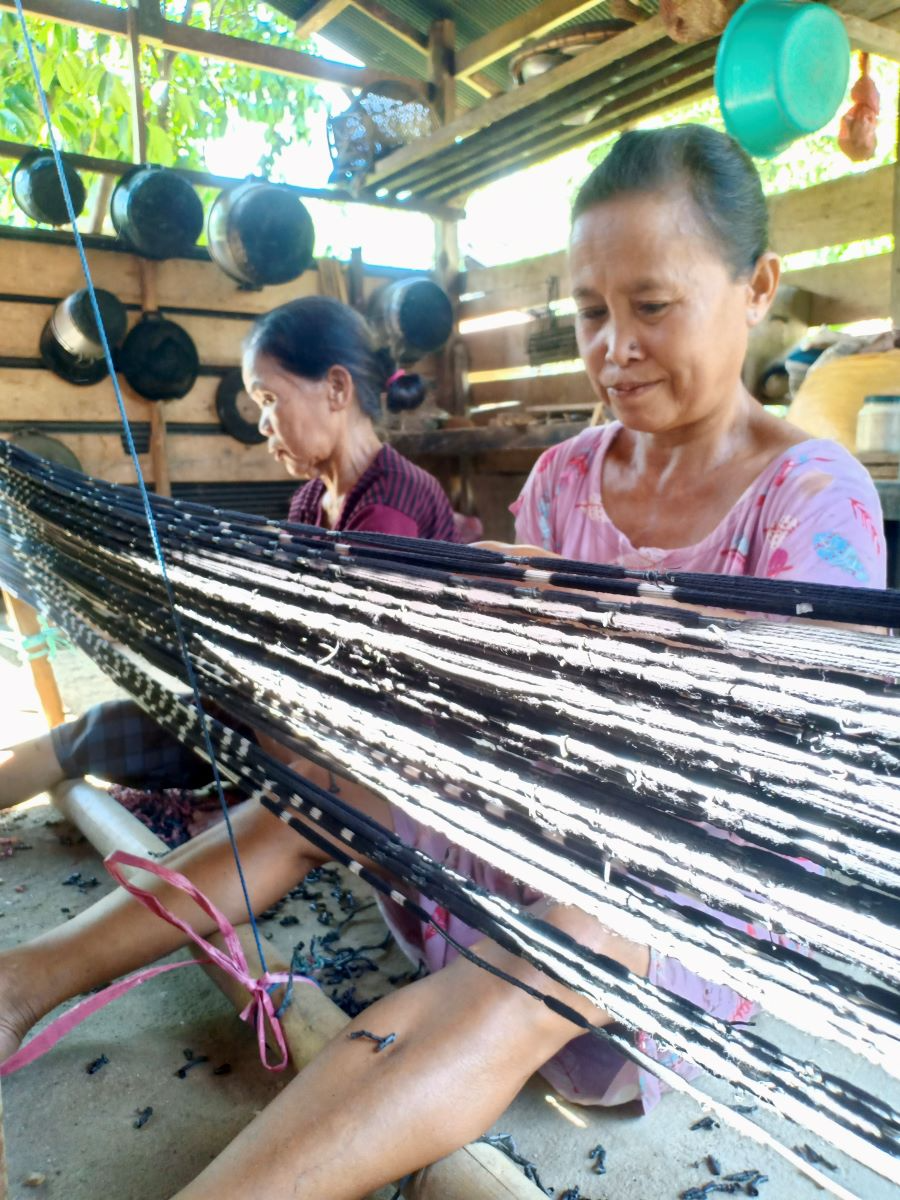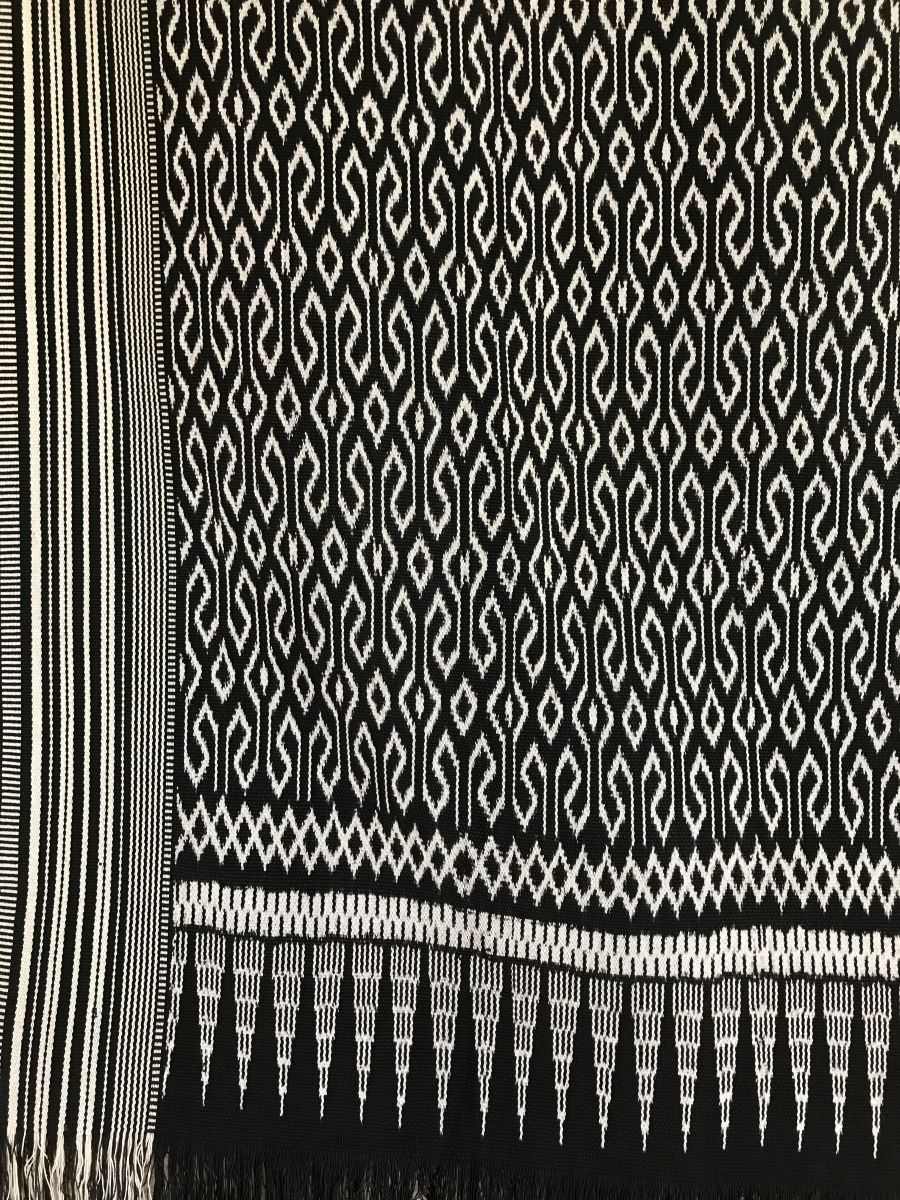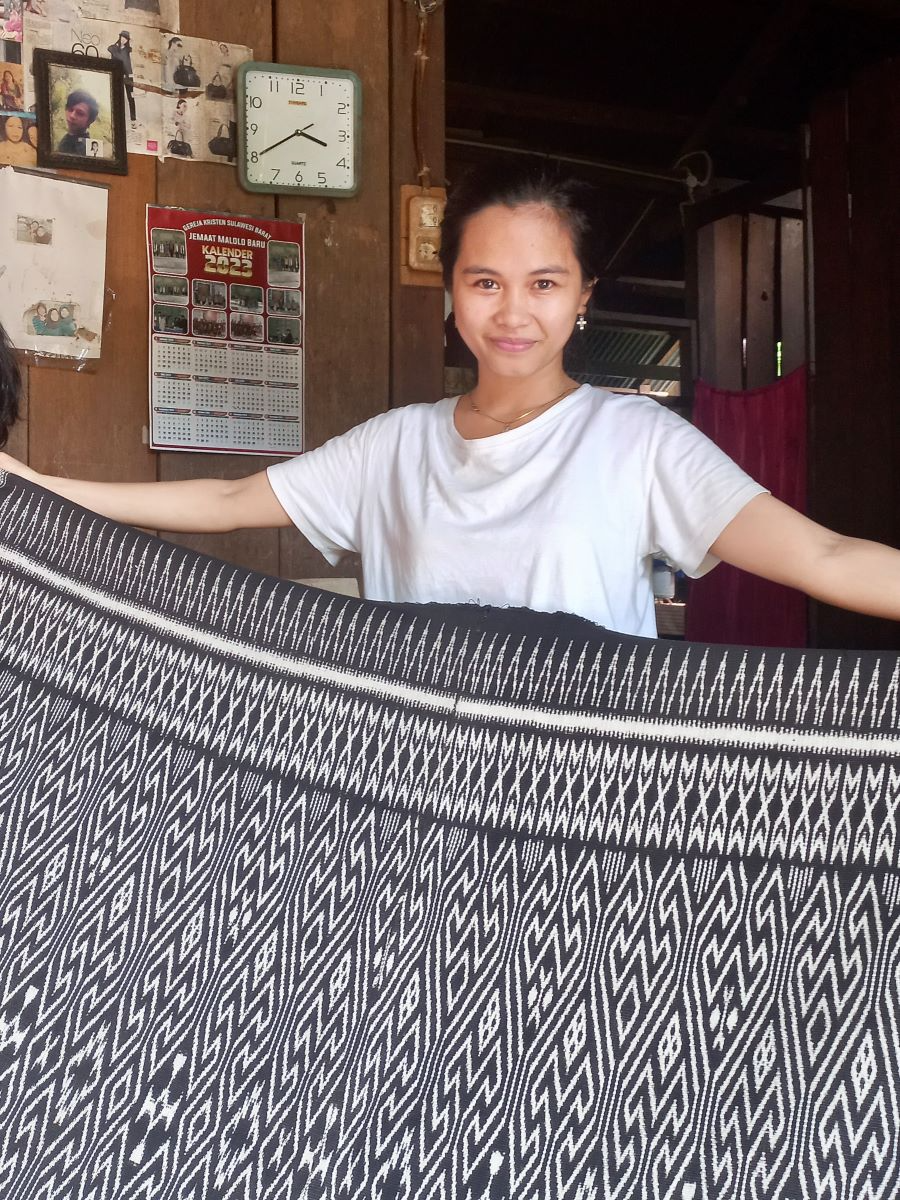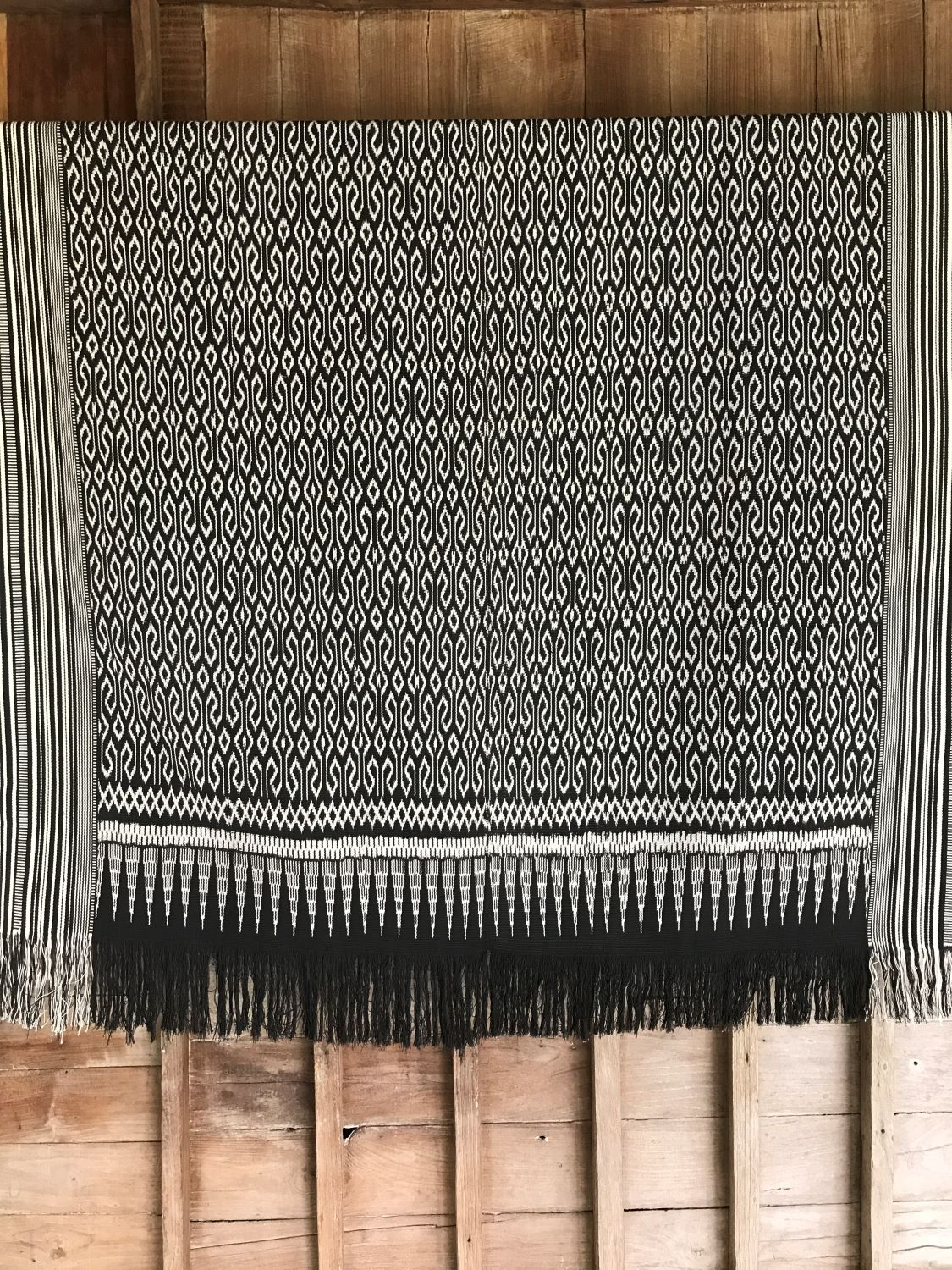Morilotong from Sulawesi

Undoing ikat ties on the warp threads of the black and white morilotong textile.
Like many traditional textiles, the textiles woven by To Mangki Karataun’s people of Sulawesi serve as a visual language to express deep values of kinship, community, and harmony. Through their elaborate hooked motifs, these textiles reflect the interconnectedness of family and the spiritual fabric of society in the region.
This symbolic significance is apparent in pieces like the rich black and white mud dyed Morilotong textiles which are said to predate the red and blue Sekomandi textiles.
Among the many motifs that embody these ideals, Ulu Karua stands out as a powerful representation of communal leadership and responsibility. Translating to “eight heads,” Ulu Karua refers to the eight traditional leaders entrusted with overseeing various aspects of community life—ranging from land and agriculture to rituals and social harmony. According to ancestral legend, this motif originated in a moment of spiritual revelation: a revered ancestor, meditating in a cave, received the design on an ancient cloth and returned to the village, where it was faithfully replicated by local weavers. The motif appears in different scales—ulu karua kasale for the large form, and ulu karua barini for the smaller—each variation carrying its own nuance and weight.

Morilotong with ulu karua pattern.

A young weaver showing her ulu karua kasale.
In every thread of a Morilotong textile, symbolic meaning is embedded with geometric patterns to affirm the deep bond between people, nature, and tradition. These textiles do not merely decorate; they narrate, connect, and preserve a cultural legacy that continues to evolve, yet remains deeply rooted in communal identity.

Warp ikat, two panels stitched together, open fringe, commercial cotton, mud dye. Ikat tied, dyed and woven in Mamuju, Sulawesi.

